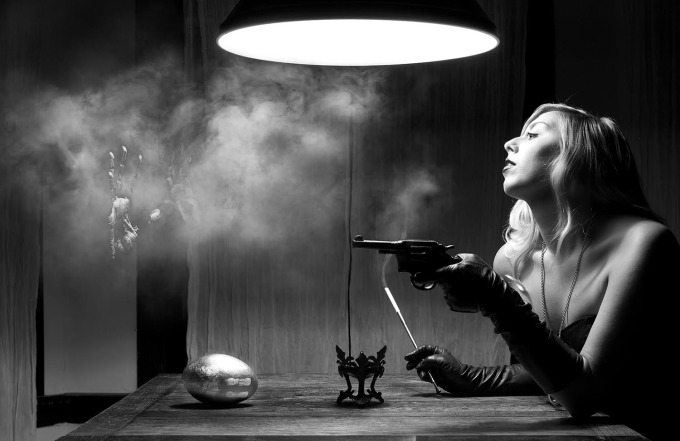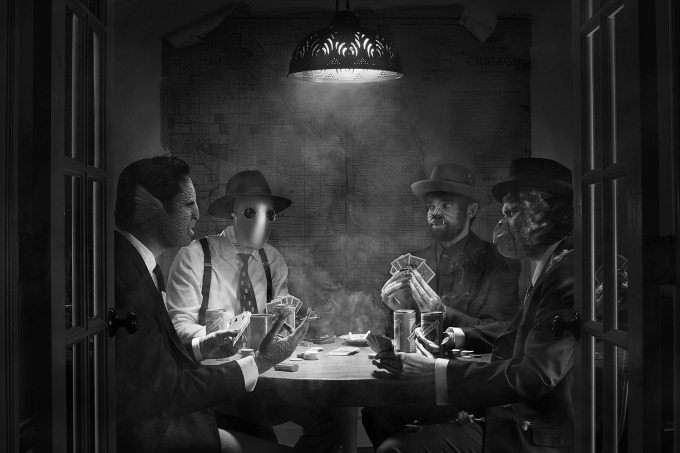Last Updated on 12/15/2014 by Chris Gampat
All images by Justin Benzel. Used with permission.
Tumblr’s Year in Review made the rounds here, and it was Justin Benzel’s work that first caught my eye. There was something so fantastically cool about his work that I felt I had to talk to him about how and why he does it. Benzel is a Chicago-based photo-illustrator and photographer who’s currently working on a project that finds itself somewhere between 1950s noir and science-fiction. Here we talk to Benzel about his inspiration, approach and technique.
For more of Benzel’s work, check out his website and tumblr.
Phoblographer: Your images exist at the intersection of several genres. Tell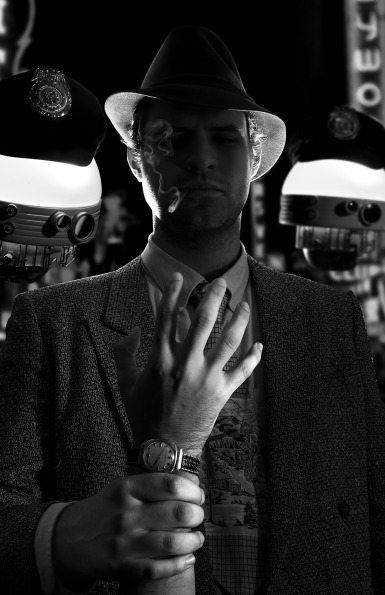 us about the inspiration for your work. Are there any particular films that informed your style?
us about the inspiration for your work. Are there any particular films that informed your style?
Justin: I am definitely interested in genre-mashing, both in terms of aesthetic and narrative tone. The main inspiration for my current project comes straight out of 1950’s noir and science-fiction (in both film and literature). I wanted to make something that embodied the cool wise-cracking style of noir like “Kiss Me Deadly”, and the absolute on-the-nose campy silliness of “Attack of the Puppet People”. Something like Twin Peaks or the X-Files, where all of the characters are fully invested in the drama, but as viewers we know that what we’re seeing is completely preposterous and is maybe meant to be seen as a sort of dark comedy.
Phoblographer: There’s an undeniable cool factor to these images. What’s your process from original idea to final photograph?
Justin: Well thank you! I credit that with watching and reading a lot of cool stuff, making notes of language in stories and compositions and lighting in their photography, and doing my best to transfer that tone and structure into a different format. Since this is a narrative project, I usually start with figuring out a good way to give the most exposition while still trying to create a dynamic image…ya know, looking for that perfect moment you’d pause in a movie which encapsulates the essence of a major event or plot point. Once I get to that place I usually run through a few sketches, and pick the one that I think has the most successful balance between narrative and aesthetic value.
Phoblographer: What’s your gear setup? How much work do you do in post-processing?
Justin: I stay pretty modest gear-wise…I have four Alien Bees (4xB800 and 1xB400), a portable vagabond, tripod, and usually a D600. Because the 50’s had so much starkness in their lightning style, I don’t tend to use much diffusion, I think it gives the images that contrast and moodiness the period is known for. In terms of post-processing, the vast majority of effects I do mostly practically, it makes all the difference when you’re trying to emulate that period, but there’s still a good amount of retouching work to smooth everything out.
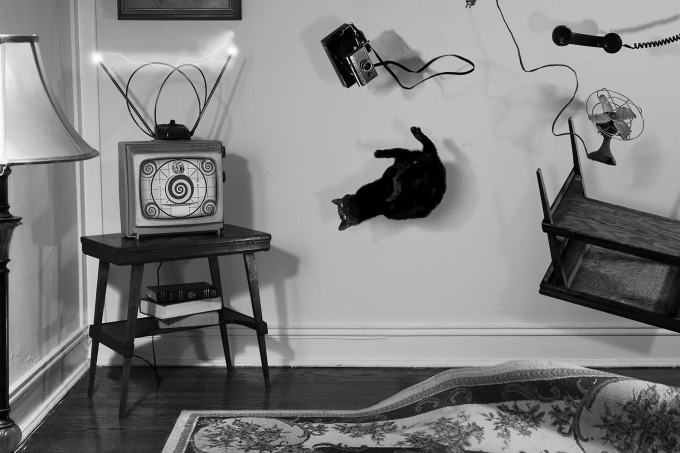
Phoblographer: How did you get your start in photography?
Justin: Well, in a bit of a roundabout way actually. I was always drawing when I was younger, and was doing that all my life through my early years of college, when I decided I couldn’t see much of a future for myself in figure drawing. I studied some cartooning with Carol Tyler at UC DAAP for a few years, who is amazing, but the school was too expensive so I went back to my hometown University of Louisville. I thought I was going to be a graphic designer but took a Photography class as an elective, and was lucky enough to get the best professor ever, to introduce me to the medium. Mitch Eckert really helped me consolidate all of my artistic experience into a manageable photographic style, and encouraged me to not confine myself to any one particular medium. I took an internship with the amazing Dean Lavenson in Louisville for 6 months, who gave me a lot of guidance on being creative and resourceful as a shooter, and having fun playing with light. Without them I probably wouldn’t have gone into photography at all.
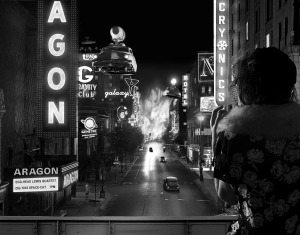 Phoblographer: In many of the images, props seem to be an essential part. Where do you get them or are they your own creations?
Phoblographer: In many of the images, props seem to be an essential part. Where do you get them or are they your own creations?
Justin: Oh yes. A science-fiction period piece is going to require a lot of props. My production designer Alaina Moore and I, have an excellent friendship and collaboration with Beehive Chicago Vintage, who are kind enough to let us use much of their inventory for props. Anything that needs to be made (i.e. laser blasters, flying cars, UFO’s, metal masks, etc.), I take care of that, usually with a lot of silver spray paint and random things I pick up at various thrift stores. I work a lot with miniatures, which are great fun to modify and change to fit your universe, and are my most favorite props to make.
Phoblographer: Your photographs are at turns dark, camp, humorous and 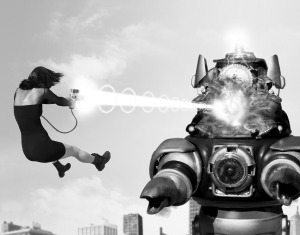 quirky, in the best of ways. Is there are a particular effect you’re going for?
quirky, in the best of ways. Is there are a particular effect you’re going for?
Justin: As I mentioned in one of the previous questions, it’s been very important for me to have all of those elements present in the body of work, for it to have an ambiguous tone. I’m a big fan of Ursula K. Leguin, and she said that “Science fiction is not predictive; it is descriptive.” and that’s really stuck with me. I wanted to make work that is about right now, but in a metaphorical, exaggerated way. I’m more of a soft-science fiction guy, I’m interested in the implications of the science-fiction concepts, and how they would affect the sociological angle of the narrative. I want my work to evoke the idea of a truly ridiculous world, which is exciting because even though it looks similar, all the rules are different and you have no idea what might happen.
Phoblographer: What advice would you give to a photographer just starting out?
Justin: Everybody wants to do this job, or something like this job. Honestly, I’m still not even sure if I’m doing this job, because it can be a very unstable profession. I think the density of the market tells the artist the best advice, if you get attention it’s probably going to be because you’re doing something interesting, not necessarily because you’re the best photographer. If you’re an artist, and really want to do that for a living, you’re probably a pretty interesting person. You should figure out your own personal style and how you see your identity, and then find a way to put that into your photography…at the end of the day I think it’s about showing yourself in the work.
